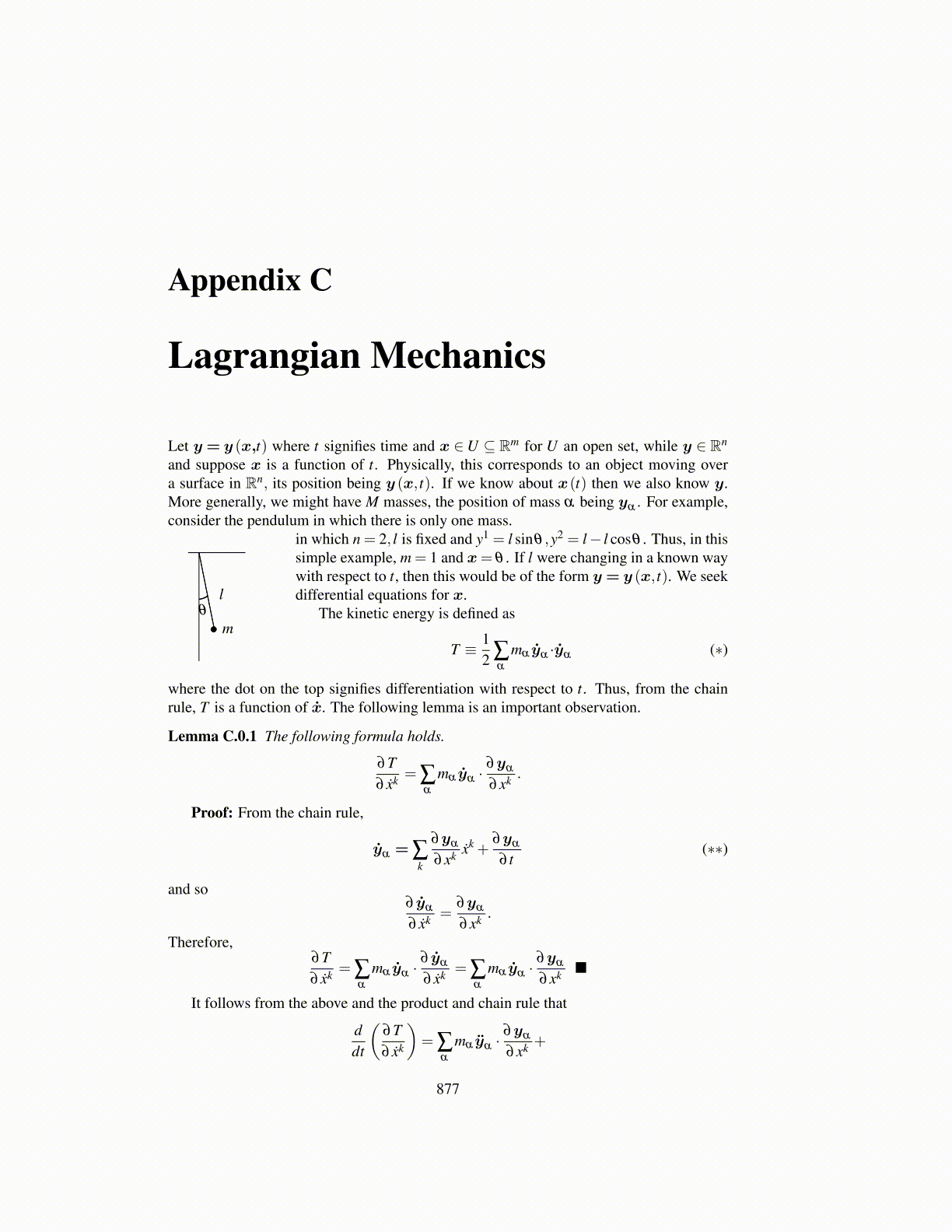
Appendix C
Lagrangian Mechanics
Let y = y (x,t) where t signifies time and x ∈U ⊆ Rm for U an open set, while y ∈ Rn
and suppose x is a function of t. Physically, this corresponds to an object moving overa surface in Rn, its position being y (x, t). If we know about x(t) then we also know y.More generally, we might have M masses, the position of mass α being yα . For example,consider the pendulum in which there is only one mass.
• m
lθ
in which n = 2, l is fixed and y1 = l sinθ ,y2 = l− l cosθ . Thus, in thissimple example, m = 1 and x= θ . If l were changing in a known waywith respect to t, then this would be of the form y = y (x, t). We seekdifferential equations for x.
The kinetic energy is defined as
T ≡ 12 ∑
α
mα ẏα ·ẏα (∗)
where the dot on the top signifies differentiation with respect to t. Thus, from the chainrule, T is a function of ẋ. The following lemma is an important observation.
Lemma C.0.1 The following formula holds.
∂T∂ ẋk = ∑
α
mα ẏα ·∂yα
∂xk .
Proof: From the chain rule,
ẏα = ∑k
∂yα
∂xk ẋk +∂yα
∂ t(∗∗)
and so∂ ẏα
∂ ẋk =∂yα
∂xk .
Therefore,∂T∂ ẋk = ∑
α
mα ẏα ·∂ ẏα
∂ ẋk = ∑α
mα ẏα ·∂yα
∂xk ■
It follows from the above and the product and chain rule that
ddt
(∂T∂ ẋk
)= ∑
α
mα ÿα ·∂yα
∂xk +
877